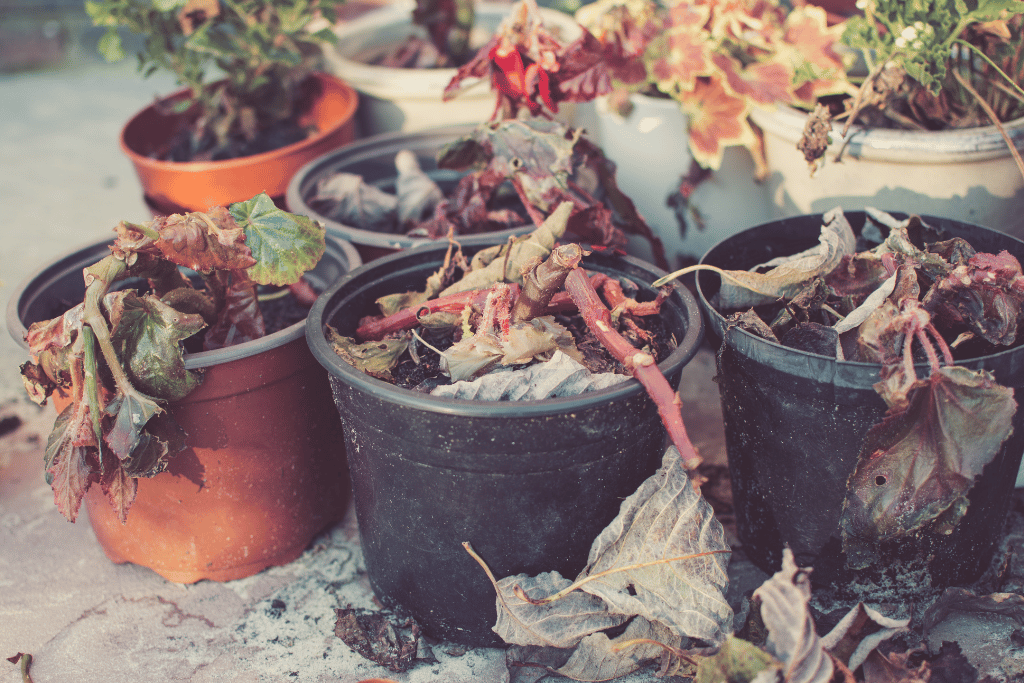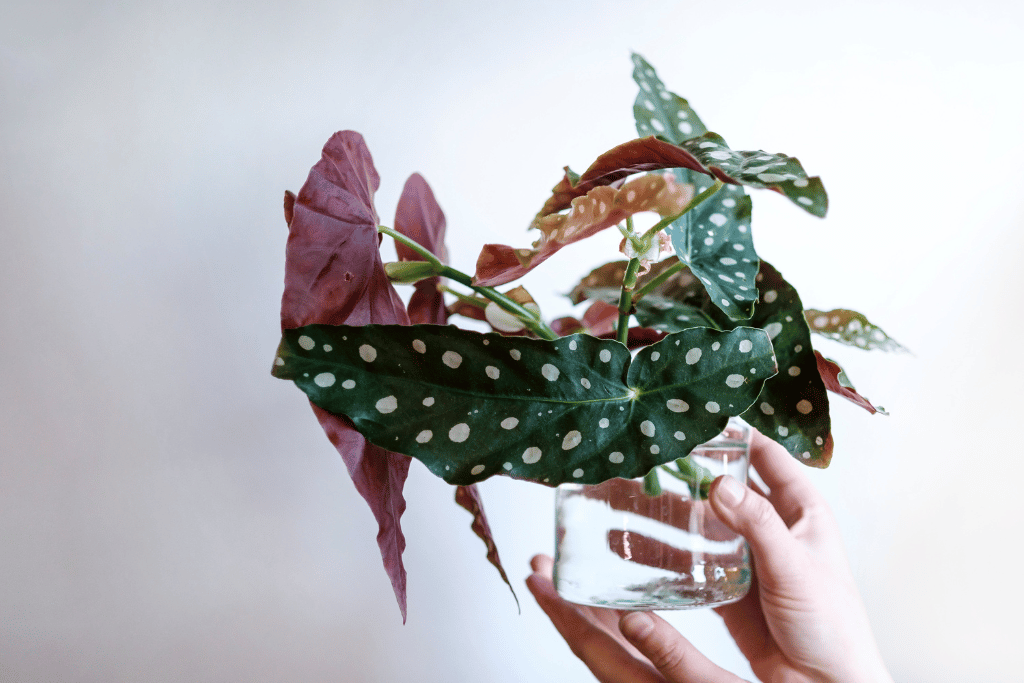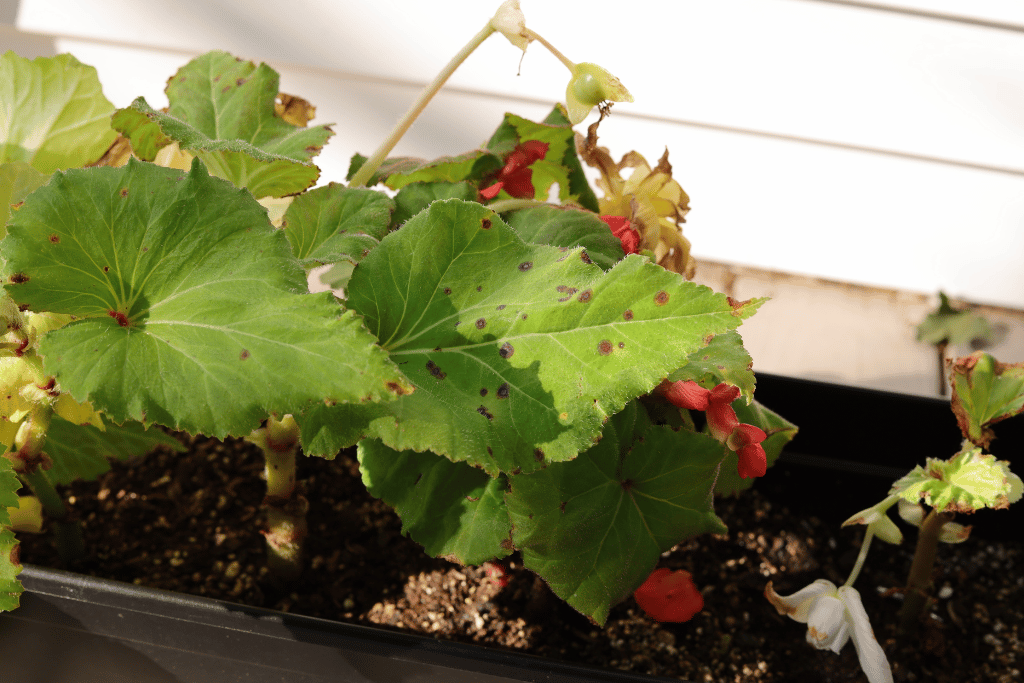
In your planting venture, have you ever made a grave mistake, a mistake that brought you to tears? I have made such a mistake! I introduced my angel wings plant to my garden sanctuary and saw it reached its deathbed.
At first, I was convinced that my gardening skills would make it a breeze to grow this beauty. After all, growing plants wasn’t new to me. However, little did I know that taking care of angel wings plants is an entirely unique experience! Unaware of their specific demands for growth and maintenance, my naivety almost cost me dearly – if it weren’t for the lessons learned from this endeavor, there’s no telling how wrong things could have gone!
My heart sank as I realized that my cherished angel wing plant was on the brink of death. I had no idea what could be causing this, leaving me with a deep sense of confusion and desperation, I kept asking myself “why is my angel wings plant dying?”
I refused to admit defeat with my angel wings plant and was determined to bring it back to health! So, join me on this captivating journey of exploration where I disclose how to save an angel wings plant from dying.
Reasons Of a Dying Angel Wings Plant

Below are some common reasons for an angel wings plant’s death:
1. Overwatering:
I made the same mistake many beginning gardeners do and over-watered my angel wings plant. Little did I know that too much love can actually drown the roots, leading to root rot and other issues which eventually causes the plant’s demise. If you’re just starting out in the gardening world, be aware of this pitfall so your plants will thrive!
My mistake:
If I had done some research before, I would have known that angel wing plants need to be watered moderately and only when the soil is dry. Instead of giving it too much water, I should have waited till the top layer was visibly dry before watering again.
2. Lack of sunlight:
The sun is a vital source of life for plants, and angel wings are no exception. These plants love indirect light that falls during the day, with at least 6 hours needed per day to remain healthy. Direct sunlight can be damaging though – too much could cause the leaves to burn!
My mistake:
For optimal growth, I should have placed my angel wings plant in an area with bright, indirect sunlight instead of direct light. Moreover, rotating the plant would have provided a balanced amount of sun for each side.
3. Lack of humidity:
Angel wings plants require damp, moist climates to flourish and can easily succumb to drought-like conditions when humidity levels are too low.
My mistake:
To keep my angel wing plant healthy, it was essential to provide it with a high-humidity environment such as close proximity to a humidifier. I also needed to regularly mist the plant and its surrounding area in order to maintain an adequate level of humidity for good growth.
4. Pests and diseases:
Just like with any other plant, angel wings plants are susceptible to damage from pests and diseases. Aphids, snails, and mealy bugs can easily infest your precious greenery while fungal issues such as powdery mildew and root rot should be taken seriously when noticed.
My mistake:
Not regularly inspecting my angel wings plant for pests and signs of disease was one of the biggest reasons for pushing my plant to the brink of death.
To sum up, there could be multiple explanations to why an angel wing plant dies. In my case, I did commit several mistakes. Nonetheless, by righting my wrongs, I was able to get my plant back to good health.
How I Revived my Dying Angel Wing Plant

You won’t believe it, but I did what many said was impossible; reviving my dying angel wings plant! It took some hard work and plenty of tender loving care, yet with perseverance and dedication my hard work paid off. Although it seemed as if all hope had gone, the incredible results speak for themselves – my little plant baby is alive again!
Here’s how I did it:
Put a stop to overwatering
To begin with, I emphasized on my plant’s water intake and only watered when the soil felt dry to the touch. This avoided root rot while also allowing oxygen to reach the roots more easily. Furthermore, I selected soil that drained well and chose a pot with tiny holes at its base in order to stop standing water from settling in one place for extended periods of time.
Gave my plant a new home
I found the perfect spot for my angel wings plant in my house that receives six hours of bright, indirect sunlight. To ensure all sides get enough light exposure, I made sure to rotate the pot regularly as well.
Focused more on humidity and misting
To keep my plant healthy and vibrant, I now mist it daily. This habit has allowed me to maintain the humidity at optimal levels; in turn, it also prevents the leaves from drying out and keeps my little buddy thriving!
Kept tabs open on pests
To effectively control pest infestations, I chose an organic insecticidal soap formula that I applied to my plant regularly. It is essential to cover the undersides of leaves as this is where a majority of insects tend to gather and hide. As an added measure for flying pests, I used sticky traps which worked wonders in catching any unwanted bugs.
Fed it well
I fed my plant with a balanced fertilizer, a 10-10-10 or 20-20-20 formula to be precise. It was super easy to follow the packaging’s directions. I fertilized my angel plant bi-weekly during its growing season – spring and summer.
And that is how I revived my Angel wings plant back to life!
Other Reasons That Contribute to Killing an Angel Wings Plant

It’s not just overwatering that can cause your plant to die- there are several other reasons too.
1. Too much sun, not enough shade
Finding that perfect equilibrium of sunlight can be a bit of a challenge. Angel wing plants must receive the right amount; feed it too much and their leaves will get scorched, while too little causes them to become limp and frail. Positioning your plant in an area with bright indirect light is key, as well as moving it in circles from time to time so each side receives ample rays!
2. Drafty spaces
Angels wing plants are fragile, so protecting them from cold breezes is critical. To ensure your plant’s well-being, be sure to place it away from drafty windows or doors that often open and close. Moreover, keep the plant far away from AC vents or heating grates.
3. Overcrowding
It can be tempting to cram as many plants onto your hanging plant shelf as possible, however, it’s crucial to give each of them sufficient room for growth. Angel wing plants in particular need their own area, whether you’re keeping them on the shelf, in the garden or on the floor. Just make sure they’re not being crowded by other plants.
4. Improper soil conditions
Things can go haywire for an angel plant if the soil conditions are not favorable. They need soil that’s we–draining to avoid root rot. Apart from this, the soil should be nutrient-rich! Try adding some perlite or sand to improve drainage.
5. Ignoring pests
It’s no secret that many gardeners don’t give much attention to pests especially when they’re new to growing plants! I did the same. But with time, it is clear to me now that common pests like spider mites, mealybugs, and scale insects can kill your angel wing plant if not taken care of! Keeping them off is actually pretty easy. All you need is organic insecticidal soap or neem oil to keep your plant pest-free.
6. Temperature fluctuations
Sudden changes in temperature can affect your plant drastically. To prevent your plant from suffering any damage, make sure to place it away from drafty windows or doors and maintain the temperature between 65-80°F (18-27°C) – a range that is perfect for optimal growth. Temperature below 50°F (10°C) or above 90°F (32°C) is too deadly for angel wing plants, and can cause stress which in turn leads to serious injury.



